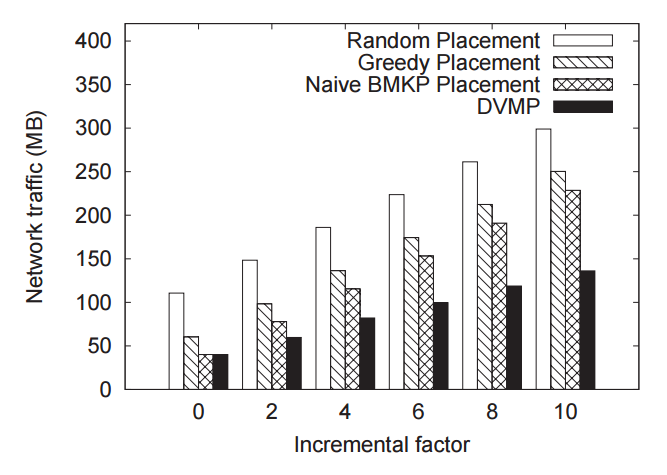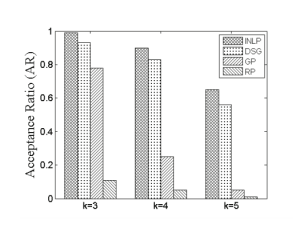With the proliferation of cloud computing, more and more applications are deployed in data centers. Moreover, many cloud applications (e.g., MapReduce) are bandwidth hungry and often shuffle a large amount of data for computation. One of the challenges that data center operators face is the increasing traffic demand among Virtual Machines (VMs), i.e., the ‘east-west’ traffic within the data center, which is now the domninant contributor to overal traffic in a datacenter (while the traffic serving customer requests – north-south traffic – only contributes around 20% to overall datacenter traffic consumption). In the past few years, numerous efforts have been spent to address this challenge in both industry and academia. Advanced network topologies with more switches and links are designed to expand the network capacity (e.g., the Fat-Tree topology), with an extra infrastructure cost. In-network computation and in-network caching solutions are also proposed to reduce the traffic pressure to the network, which require modifications to the switch functionalities and thus is hard to deploy.
CleanSky follows a different approach towards this problem: instead of increasing the capacity of the network (which also means higher energy costs for the whole datacenter), we propose to instead place VMs intelligently to reduce the amount of traffic between them. Towards this goal, CleanSky fellows have addressed different problems in their work so far:
At THU, Syed Shah-e- Mardan Ali Rizvi (ESR 6) has contributed to placing these VMs in a traffic-aware fashion. That is, those VMs which intensively communicate with each other, are placed either in the same physical server or close to each other in the topology, such that the east-west traffic between these VMs is reduced as much as possible. The proposed algorithm is called DVMP and can reduce traffic in a data-center by more than 25% when compared to state-of-the-art solutions and by more than 50% when compared to the often implemented random placement as shown in the Figure below. This work has been published in IEEE IWQoS 2016 and the full paper can be retrieved from our publications page.
Seeing the problem of VM placement from a different angle, at GWDG, Song Yang (ER 2) has proposed a scheme that intelligently places VMs so that at least one set of a customer’s requested machines is actually available to the customer. The problem tackled here is that, if VMs that serve one customer and thus communicate frequently with each other, are placed on one single machine, in case of that machine’s failure, the service level agreement (SLA) with the customer might not be met. Thus, Song has studied the problem of placing sets of requested VMs on aminimum number of datacenter nodes, such that the VM placement availability requirement is satisfied and each VM pair has a communication delay no greater than the specified. As shown in the figure below, the resulting algorithm is able to achieve much higher request acceptance ratios when compared with greedy or random This work has been published in IEEE RNDM 2016, can be retrieved from our publications page and complements the work of ESR 6.
Several other CleanSky fellows are currently working on further VM placement. This includes Yordanos Tibebu Woldeyohannes (ESR3), who is working on an otimization framework for placing Virtual Network Functions in a network, and Sameer Kulkarni (ESR5), who is working on migration processes for VMs across datacenters, which is one important step in dynamic VM placement.


